- Home
- Melissa de la Cruz
Girls Who Like Boys Who Like Boys Page 2
Girls Who Like Boys Who Like Boys Read online
Page 2
My friends have mused that my love affair with boys who like boys is out of safety—there’s no threat, no fear of rejection. The usual pop psychology tropes.
I wholeheartedly disagree, as does my therapist, who is, for the record, gay.
It’s all about fashion. Yes, fashion. My gays and I share a bond that runs deep and often into superficial subject matters such as luxury labels, discussing what celebs wear (we’re harsher than any tabloid—eat, Nicole, eat!), and Kate Moss obsessions (like me, they rip tear sheets from magazines and mimic what she’s wearing—be it sailor jeans and a tucked-in gray T-shirt or jean shorts and a brown leather bomber jacket, sometimes even her red patent booties—yes, I am talking about the boys wearing those things, even down to the dresses in some cases). We revel in how Nicolas Ghesquierre of Balenciaga’s sartorial idealism has changed our lives and who’s got the best costumes on So You Think You Can Dance, a show that only my gay friends and I can give the excitement it deserves (we try those hip-hop moves while the girls watch in horror as we fall flat—and we have the bruises to prove it). I don’t know why, but the girls in my life are not into frivolity to the obsessive level that leads my gays and me to chat rooms, reading up on our favorite contestants, and forwarding one another online photos we find of last year’s dance contest runner-up Travis in pink girl’s panties.
With girls, it’s not the same. They don’t let themselves go with the same reckless abandon that gay men do. Of course, not all gay men care about the new collection of limited edition Marc Jacobs T-shirts or channeling Dorothy Draper when doing their apartments, but for the ones I keep in my inner circle, such conversations are serious business akin to giving stock tips to Martha Stewart.
Don’t get me wrong: My gays have also been there for me emotionally, for every breakup, failure, and career mishap. (And they are excellent spooners, at that.) We even talk intelligently about the situation in the Middle East (Hezbollah aside, apparently women in Saudi Arabia are obsessed with fragrance and layer it on as a way to assert their personal style under their modest covered-up garb), global warming (we agree: Gore should really lose some weight and eat organically if he’s going to walk the walk), and babies (I pray I have at least one boy who likes boys).
It’s just that the politics of fashion are different with my girlfriends, even the ones who are, like me, in the industry. With women, there is an underlying competitiveness that doesn’t exist with the gays. Whether we’re covering the New York fashion shows or hitting our favorite stores in search of yet another chic everyday black coat, I have found that girls either secretly want your ass to look fat or to one-up you. And they always bring their baggage along for the ride. Girls don’t just look at the way a dress fits you; they have to deliver a whole analysis about how it will fit into your life.
I took a very good friend of mine—I’ll call her Isabella (she needs a fashionista name, even if it’s a pseudonym)—to a handbag showroom in order to buy the most luxurious python bags at wholesale, half of what they were at Bergdorf’s. We spent hours carefully editing down our favorites, a difficult task considering there were about a dozen bags we were both dying for and our bank accounts could only accommodate one. I managed to get it down to two bags—an oversized hand-painted silver rectangular number and a bright pink and red tie-dyed tote that, while hardly a basic, would make an outfit pop.
The pink and red was a sample, never produced. There was only one in existence; I’m a sucker for having the only one of something, no matter how impractical. “You will wear the silver soooo much more,” Isabella urged. “The other is so hot, but you’ll get sick of it.”
She had a point. Eighty-five percent of what I own are what my husband calls “concert costumes”: look-at-me-wear-it-once-only items. These clothes are appropriate for the cocktail and fashion parties I cover, but then I often end up complaining about not having anything to wear for, say, lunch on Sunday afternoon.
Maybe Isabella was right. Silver was really what I needed, so I bought it. But the morning after, I suffered from regret. I was walking out the door in jeans and a white sweater with a hugely dramatic cowl neck and thought, damn, that red-and-pink bag would look sick with this!
I called the designer to trade.
“Oh, I’m sorry. Isabella came back and bought the red and pink, too,” she cooed.
She did what? I felt so cheated. When I asked Isabella about it, she made up some story about how her husband got it for her as a Christmas gift. I wasn’t buying it—and that was the last time she got an invitation for showroom privilege with me.
Every one of my gays would have told me to get the red bag! The gays have no ulterior motives. They don’t want to fuck me. They don’t want to be me. All they want is for me to look good. They go through racks for me with the laser focus of a fashion sniper. They will deliver wrath with a mere glance to any salesperson who mistreats me. Most importantly, they never pass judgment when I creatively finance something I have to own by finagling it on three credit cards and a borrowed hundred dollars.
“It’s like gambling” was the advice I got from two wise gays once. “Shuffle the credit cards, have a poker face, and look confident when you can’t afford something.”
Shopping with gays is my prom-queen moment—when we’re out together, you’d think we were Marie Antoinette and her court (as played by Kirsten Dunst and a host of handsome actors, of course). As I try on heels, my gays squeeze their size-eleven feet into the same shoes. They hold my handbags more gracefully than I do. A few have been known to roll around the floor of a dressing room swathed in chiffon Oscar de la Renta one minute, and try on the latest skinny jeans in my size the next. They all have perfect size 2 or 4 bodies; the bitches look better than I do! My gays are all about encouraging me to go for the ridiculous big-ticket item just because it’s deee-vine. They understand that one piece that makes you feel amazing is better than ten pieces that are “eh.”
A certain voluminous Lanvin dress, so overpriced that I asked the salesgirl to throw away the receipt and lie to me about the total, comes to mind. Plus, it was so large it would look big on Andre Leon Talley.
“Giiirrrlll, it’s fabulous! You have to have it. You can pull it off. Oh, please! Look at you. You’re fierce. You work it better than SJP. It’s an iconic piece,” was what my pusher Don said when I was in doubt.
“But where will I wear it? It’s an occasion piece and I have no occasion.”
“Um, the grocery store! Brunch! Occasions are a state of mind,” he said.
Now tell me, what straight male or female would say such a thing?
I did get “Big Red,” as I affectionately call her, though I have yet to introduce her to an admiring public at large. But she sure does look lovely hanging in my closet, sandwiched between a wildly graphic Gaultier Mexican-inspired blue dress with a built-in petticoat (worn once to a salsa lesson with a gay man who generously loaned me his skills when I needed to practice for my wedding and my fiancé was out of town) and a white, strapless, curly ostrich-feathered number that I wore to the White Party in New York last year. On the night of that gay bacchanal, I found myself on the receiving end of more attention than a postbaptism baby in church.
A big hat? The gays will tell me to bring it on, while my girlfriends tend to think it’s too much. Uncomfortable shoes? The gays, like me, believe that there’s no other kind, while my girlfriends tend to err on the side of practical. Is it any surprise that my all-time favorite shoe designer, Christian Louboutin, is an openly gay man whom I am obsessed with? Or that I am in love with all things made by Philip Treacy, the very gay milliner known for hats that resemble intricate sculptures of museum quality? I think not.
When I was getting married in April of 2006, I didn’t want bridesmaids. I had bridesgays. Why? Well, for one, when I was in three gay weddings last year, none of the brides (some of them call themselves brides, it’s true) asked me to traipse down the aisle in a taffeta bridesmaid number so hideous even the Salvation Army
wouldn’t take it!
One of my gays generously offered to accompany me to go lingerie shopping for my honeymoon, though I ended up spending the day helping him pick out a harness for a leather daddy convention in Chicago (I was called to the dressing room for cock ring 911). Another was on call for tablecloth, linen, and floral approval with the event designer. My team of bridesgays never rolled an eye, complained, or pulled any kind of high maintenance routine, cock ring moment notwithstanding. Instead, they were incredibly supportive—even offering free blow job lessons at the bachelorette party! And let’s not forget that they gave the best bridal shower and wedding gifts.
My bridesgay-of-honor was in charge of attending my bridal fittings in order to learn how to get me into my complicated, one-of-a-kind, custom-made Zac Posen gown (I realized after the second fitting that there was no way I could attempt such a feat alone). During that year of manic wedding planning, Zac became my fairy godmother of couture.
While I appreciate Vera Wang for what she does, the idea of being in an estrogen-laden bridal salon—no, thanks. I’m a girl’s girl all the way: I support my girlfriends unconditionally, lending them everything from my not-yet-worn clothes and a sympathetic ear during breakups and career dramas to my husband for fix-it emergencies (the man is good with a hammer!) and dating advice if need be. In high school, I always shared my notes. But an all-female bridal frenzy would have been too anxiety provoking. (Handling my mother was enough!) I didn’t have the strength to take on other women’s issues with weddings, marriage, and fertility. After all, as soon as you get the ring, they all start asking about procreation.
I figured that the only person whom I could really trust with my dress would be a gay man. And Zac represented whimsy, fantasy, a beautiful escapism. Only he would understand my need to look like a flamenco queen chic enough for a proper Great Gatsby moment, even if the petticoat would get in the way of every twirl on the dance floor. The dress he made me was a glorious confection that combined twenties refinement with cascading tiers of pleated silk tulle, trimmed in pom-poms, complete with a glamorous cowl back. Heaven! As much as I adored the gown, it wasn’t the easiest to walk in, but as my gays say, “When it comes to fashion, walking is overrated, but a little champagne will take care of that.”
Since I tend to be a heady neurotic type who could give Woody Allen a run for his Zoloft, my gays have a magical way of bringing light and laughter to my world. While primping in the bridal suite hours before my wedding, my girlfriends (they weren’t in the wedding party, but they were on hand to play in the bridal suite) and I relaxed as the team of hair stylists and makeup artists went to work. We were all talking quite seriously about relationships, communication issues, and the self-help book Getting the Love You Want.
In a surreal moment, just as I craved some levity, in walked Don and Thom, two beautiful, chiseled gay men who had donned white Gatsby-inspired dinner jackets. They popped the Cristal, put Sheila E.’s “The Glamorous Life” on the stereo, and swiped blush brushes from the makeup artist, handing them to everyone in the room as if they were microphones.
They grabbed my mother, still in her robe, to dance. They threw confetti. They screeched gleefully over the (borrowed) diamonds I was planning to wear. My girlfriends are a fun bunch, but not one got up to dance. They sat, almost self-consciously, nibbling at carrots and taking photos with their camera phones. I begged them to get up and shake it, but I had no such luck. Don and Thom were giving the room life, getting the energy flowing. As they ripped off their shirts, I realized that they were turning my wedding day into the madly blissful party it was supposed to be.
“Girl, you’re getting married. Get your ass up and dance! This is your theme song,” Don said, before belting out the chorus of the eighties pop song I lived for as an eighth-grader. “She wants to lead the glamorous life. She don’t need, a man’s touch!”
A few hours later, as I walked down the aisle with my nervous dad, getting ready to give myself to my husband, I thought about Don and Thom for a second and turned my slow walk into a supermodel’s sashay. I nearly tripped, only saving myself by shouting out, “It’s not easy to be graceful in couture!”
Sam, one of my bridesgays, yelled out, “It doesn’t matter. You look fabulous!”
All 167 guests burst out in laughter.
That’s my love affair with the gays: No matter how often I fall, my crew of boys who like boys will always be on hand to prop me back up in my four-inch heels.
FAG HAGS: THE LAUGHTER,
THE TEARS, THE MARABOU
Simon Doonan
I once knew a fag hag called Ginger. One day she lost her mind and stuffed her fur coat in the oven. Then she turned the oven on high. It smelled horrible. The fur coat was destroyed, but Ginger wasn’t. She eventually recovered.
Fag hags in 1970s London were resilient. They were young and silly and often drunk, just like us fags.
I consider myself fortunate to have been born a happy-go-lucky card-carrying fag. If, for whatever reason, I were to have been denied this privilege, then I would have settled for being the next best thing: a fag hag.
Maxine, Eve, Pamela, Jeanine, Hattie! Where are you now? Where are the great fag hags of yore? And why did they disappear? Like 8-track cassettes and princess phones and Idi Amin, the fag hag, as I knew her, is a thing of the past. She’s an obsolete concept. An extinct species. She’s very last century, dahling! Haggus fagulous ceased roaming the earth about a quarter of a century ago. The 1970s was, in fact, the golden age of the fag hag. I know whereof I speak. I was fag to many a hag.
It all made perfect sense at the time. The smartest, most sensible thing you could do back then, if you were a single working-class girl, was to get a job in a fag-rich environment, be it a hair salon or a department store. Then, with the encouragement and support of your new coterie of fags, you could henna your hair, buy a few Bowie and T. Rex albums and an electric blue jumpsuit, and become a raging, screaming, eyebrow plucking, feather boa totin’, fishnet lovin’, cocktail quaffing, cigarette holder manipulatin’ fag hag.
Fag hags emerged from the working classes. Upper-class gals never became fag hags. Why would they? Their idyllic lives were a montage of privilege, country houses, tweed skirts, hunt balls, and dinner parties with Clarinda and Arabella and Sebastian. No such guaranteed delights awaited a working-class gal—a Sharon, a Sheila, or a Shirley. If she didn’t watch out, she could easily find herself pulling entrails out of chickens’ bums in a factory for the rest of her life. To avoid this fate, Sharon or Sheila or Shirley had to do something drastic.
Becoming a fag hag was something you did if life handed you a second-class ticket and you had a deep-seated, unshakeable feeling that this was the wrong ticket and that you might be a lot more comfy if you were able to sneak into that tarted-up, squishy, velvet-draped first-class carriage. For a girl with delusions and a bit of imagination, becoming a fag hag was the only way to go. Instead of a nylon chicken-gutting uniform, you could wear a cape made of jet-black, glazed cock-feathers with a spot-veiling fascinator covering your eyes, like Marlene Dietrich in Shanghai Express, and you could stare at the world with an amused, heavy-lidded, irony-drenched gaze.
Life as a fag hag was camp and fizzy and fun. You could jump on the sequined coattails of gay boys, gay boys who could cross socioeconomic boundaries. We gay boys could take you places or at least make you feel that you might stand a chance in hell of going places! Even if we were standing still, hanging out with us fun-loving perfumed nellies was so much more appealing than dealing with smelly beer-drinking straight blokes—the ones we gay boys often had our eyes on—who just wanted to beat each other up and whose idea of a romantic night out was to shag Shirley, Sheila, or Sharon up against a wall behind the pub.
We 1970s gay boys were insanely more fun to be around, and unlike uncouth straight boys, we got invited to things. We knew about things. We knew about people, people like Yma Sumac and Yves Saint Laurent and La Lupe and Kiki de Montparnasse and
the Marchesa Casati and Nancy Cunard, the rebel aristo who had a penchant for black men and wore hundreds of ivory bracelets right up to her armpits. We were common and lowborn but we had a natural instinct for ferreting out fabulous historical tidbits and eccentric personalities from our culture. We smoked colored cocktail cigarettes and found humor in everything and wore outré outfits and did whatever the fuck we wanted to. If skinhead gangs chased us and called us “bloody poofs,” we jumped on buses that were going in the wrong direction to get away and then giggled about it.
The fag hag took her cue from the fag: Armed with her faggotry, she side-stepped the grim demands of adult life. She found a way to feel very grown-up and glamorous—her look was often a pastiche of Hollywood grown-up glamour—while simultaneously prolonging the innocence of childhood dress-up.
The fag hags that I knew were all flashy dressers. Jerry Hall, Bianca Jagger, Tina Chow, Paloma Picasso, Loulou de la Falaise, Zandra Rhodes, Marisa Berenson, The Pointer Sisters, Angie Bowie, Amanda Lear, these were the idols and role models for my fag hags. It is possible that there were dowdy, frumpy fag hags with Iris Murdoch–bowl haircuts and flannel skirts and thick underwear and crummy eyewear, but I seriously doubt it. To be a fag hag in seventies London was to wear cat-eye glasses and be in a perpetual state of readiness to be discovered and shot for the cover of the next Roxy Music album. To be a fag hag meant you were out twirling a feather boa, on display, every night of the week.
We—me and my fags and fag hags—hung out at gay pubs like the Vauxhall Tavern and The Black Cap and small groovy clubs like The Masquerade and Chaguaramas. Our fave was a tatty club with a light-up dance floor on Kensington High Street called The Sombrero. It was piss elegant and posey, which perfectly matched the mood of fashion at the time—very art deco, if you know what I mean. When the massive Biba store—one of the largest employers of fag hags in British history—opened across the street, The Sombrero was packed with boys with pomaded hair and Bakelite bracelets and girls in suede platforms and smoky eyes and, for the thinner fag hag, leopard-print belts that were about a foot wide. Fags and fag hags believed in the transformative power of accessories.

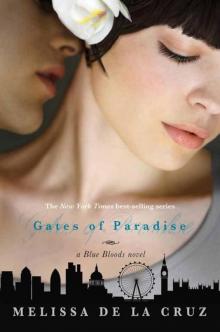 Gates of Paradise
Gates of Paradise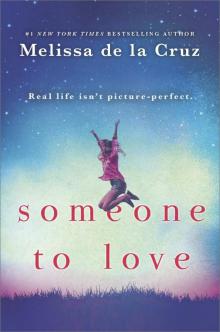 Someone to Love
Someone to Love Pride and Prejudice and Mistletoe
Pride and Prejudice and Mistletoe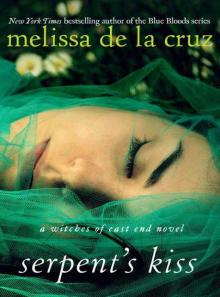 Serpent's Kiss
Serpent's Kiss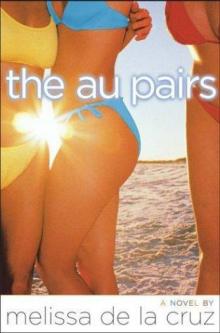 The Au Pairs
The Au Pairs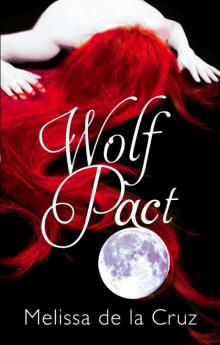 Wolf Pact
Wolf Pact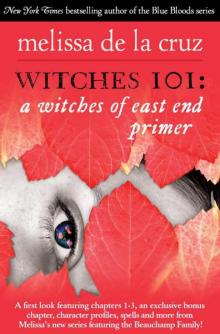 Witches 101: A Witches of East End Primer
Witches 101: A Witches of East End Primer Jealous?
Jealous?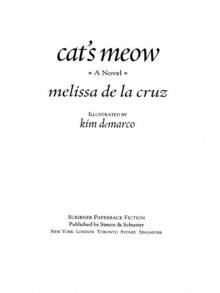 Cat's Meow
Cat's Meow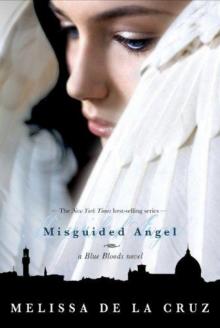 Misguided Angel
Misguided Angel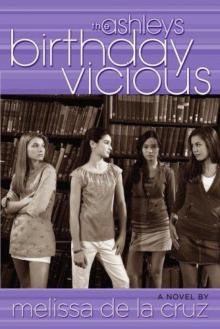 Birthday Vicious
Birthday Vicious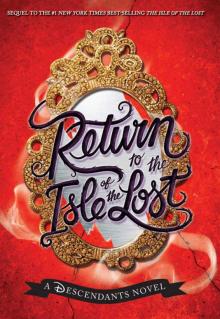 Return to the Isle of the Lost
Return to the Isle of the Lost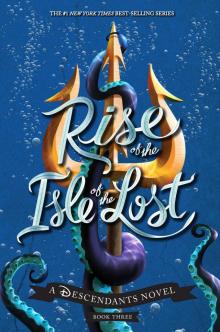 Rise of the Isle of the Lost
Rise of the Isle of the Lost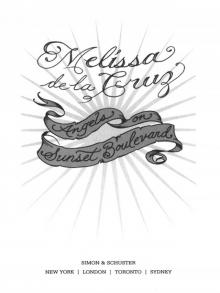 Angels on Sunset Boulevard
Angels on Sunset Boulevard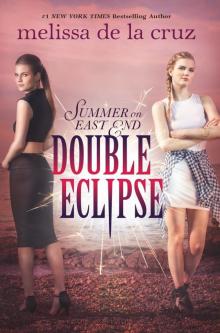 Double Eclipse
Double Eclipse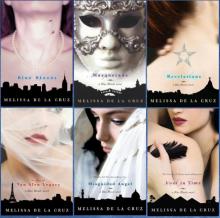 Blue Bloods
Blue Bloods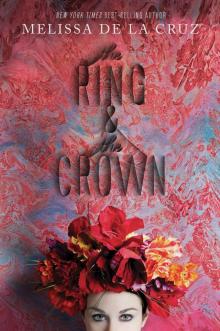 The Ring and the Crown
The Ring and the Crown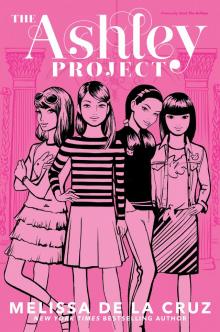 The Ashleys
The Ashleys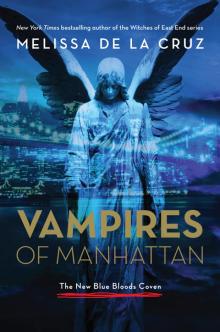 Les vampires de Manhattan
Les vampires de Manhattan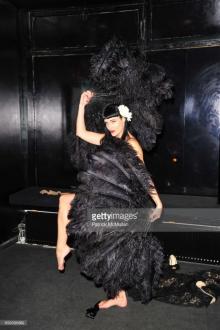 The Van Alen Legacy
The Van Alen Legacy Sun-Kissed
Sun-Kissed The Isle of the Lost
The Isle of the Lost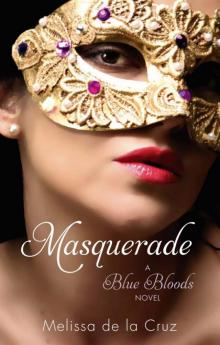 Masquerade
Masquerade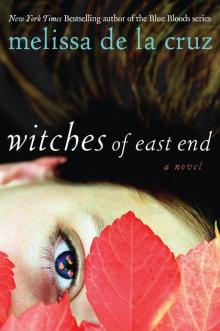 Witches of East End
Witches of East End Diary of the White Witch
Diary of the White Witch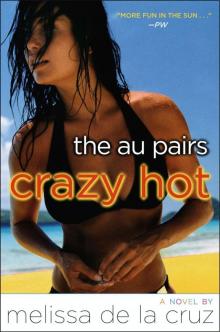 Crazy Hot
Crazy Hot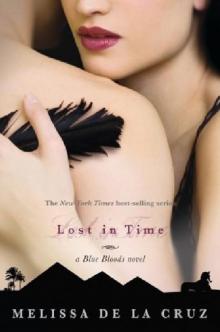 Lost in Time
Lost in Time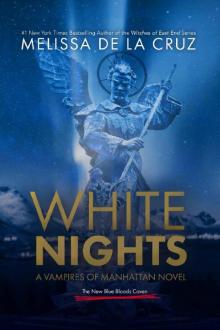 White Nights: A Vampires of Manhattan Novel
White Nights: A Vampires of Manhattan Novel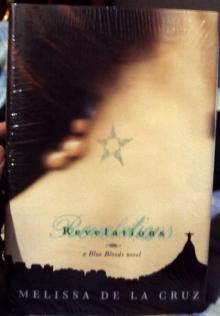 Revelations
Revelations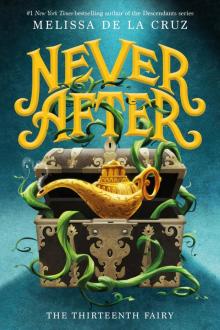 The Thirteenth Fairy
The Thirteenth Fairy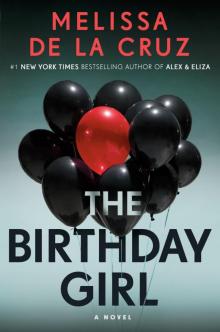 The Birthday Girl
The Birthday Girl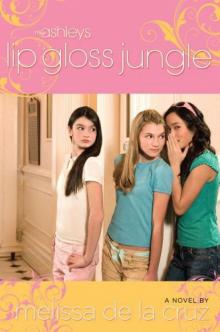 Lip Gloss Jungle
Lip Gloss Jungle Fresh Off the Boat
Fresh Off the Boat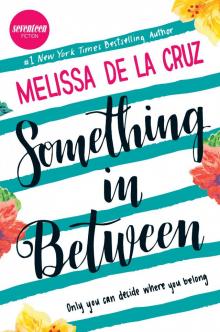 Something in Between
Something in Between Winds of Salem
Winds of Salem The Queen's Assassin
The Queen's Assassin Love & War
Love & War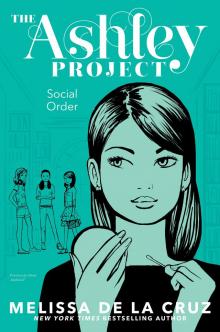 Social Order
Social Order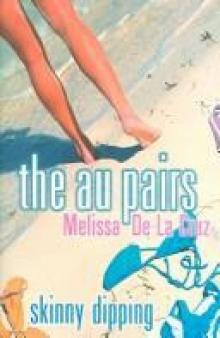 Skinny Dipping
Skinny Dipping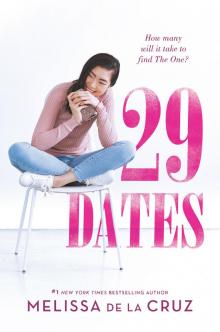 29 Dates
29 Dates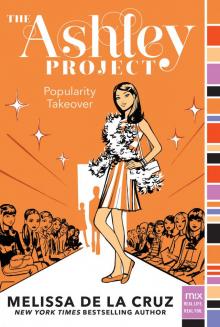 Popularity Takeover
Popularity Takeover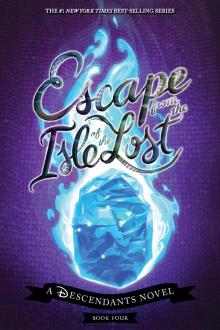 Escape from the Isle of the Lost
Escape from the Isle of the Lost Beach Lane
Beach Lane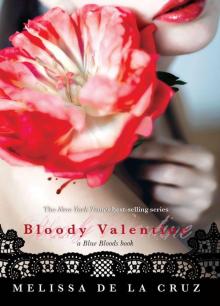 Bloody Valentine
Bloody Valentine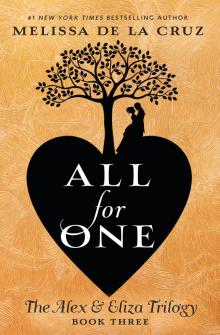 All for One
All for One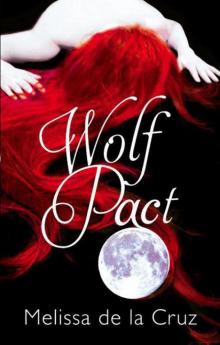 Wolf Pact: A Wolf Pact Novel
Wolf Pact: A Wolf Pact Novel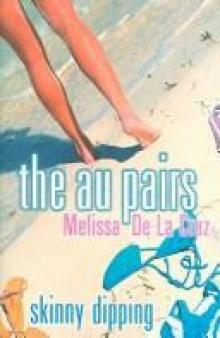 The au pairs skinny-dipping
The au pairs skinny-dipping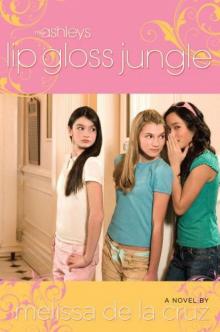 Lip Gloss Jungle (Ashleys)
Lip Gloss Jungle (Ashleys)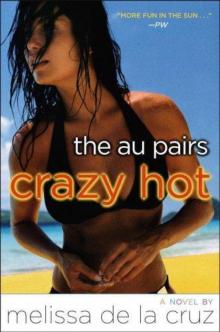 Crazy Hot (Au Pairs)
Crazy Hot (Au Pairs)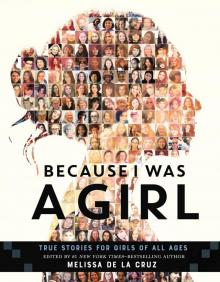 Because I Was a Girl
Because I Was a Girl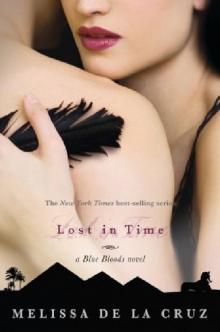 Blue Bloods 6 - Lost in Time
Blue Bloods 6 - Lost in Time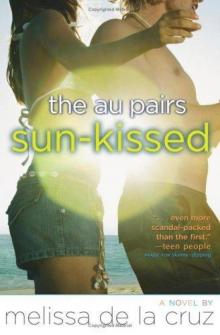 Sun-kissed (Au Pairs, The)
Sun-kissed (Au Pairs, The)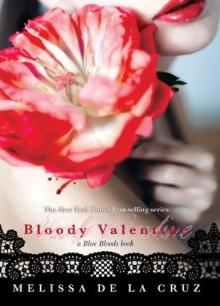 Bloody Valentine bb-6
Bloody Valentine bb-6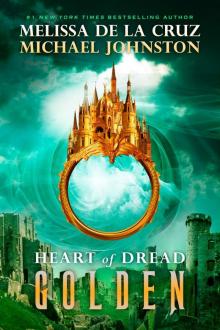 Golden
Golden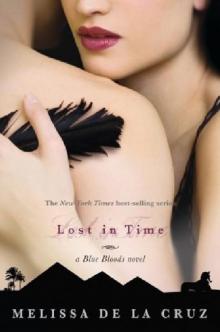 Lost in Time_A Blue Bloods Novella
Lost in Time_A Blue Bloods Novella Alex and Eliza--A Love Story
Alex and Eliza--A Love Story Blue Bloods: Keys to the Repository
Blue Bloods: Keys to the Repository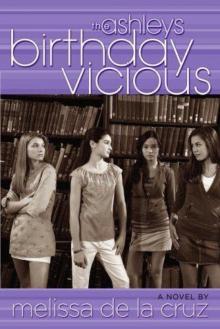 Birthday Vicious (The Ashleys, Book 3)
Birthday Vicious (The Ashleys, Book 3) Keys to the Repository
Keys to the Repository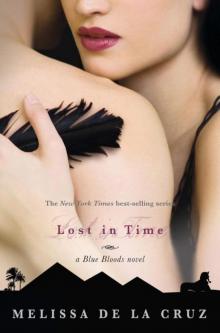 Lost In Time (Blue Bloods Novel)
Lost In Time (Blue Bloods Novel)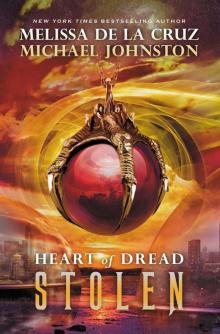 Stolen
Stolen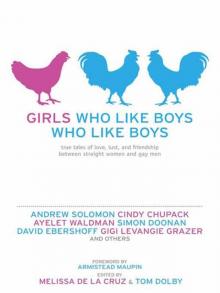 Girls Who Like Boys Who Like Boys
Girls Who Like Boys Who Like Boys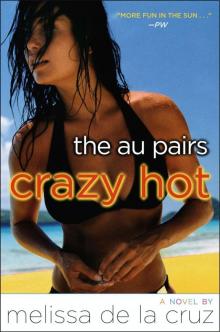 the au pairs crazy hot
the au pairs crazy hot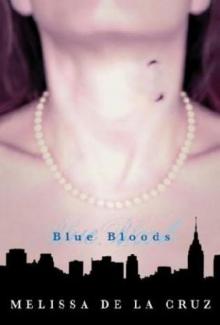 Blue Bloods bb-1
Blue Bloods bb-1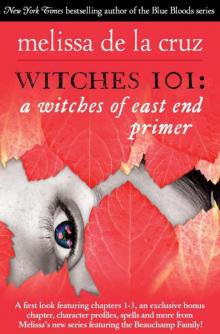 Witches 101
Witches 101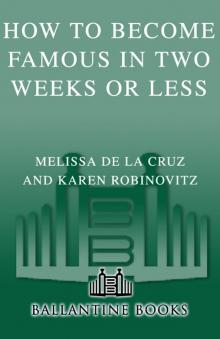 How to Become Famous in Two Weeks or Less
How to Become Famous in Two Weeks or Less Frozen hod-1
Frozen hod-1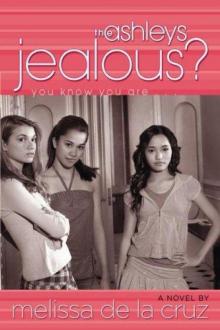 Jealous? (The Ashleys, Book 2)
Jealous? (The Ashleys, Book 2) Misguided Angel (Blue Bloods)
Misguided Angel (Blue Bloods)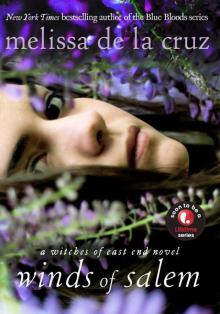 Winds of Salem: A Witches of East End Novel
Winds of Salem: A Witches of East End Novel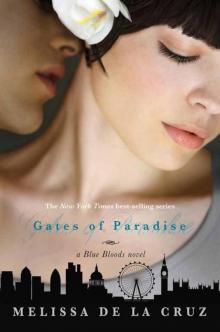 The Gates of Paradise
The Gates of Paradise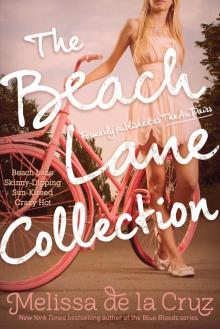 Beach Lane Collection
Beach Lane Collection Wolf Pact, The Complete Saga
Wolf Pact, The Complete Saga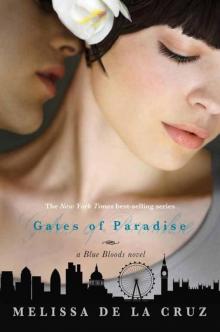 Gates of Paradise, The (Blue Bloods Novel)
Gates of Paradise, The (Blue Bloods Novel)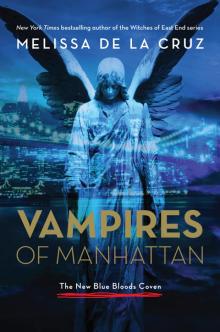 Vampires of Manhattan
Vampires of Manhattan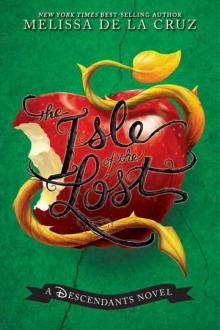 Isle of the Lost
Isle of the Lost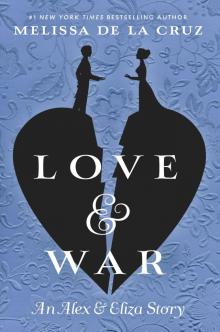 Love & War_An Alex & Eliza Story
Love & War_An Alex & Eliza Story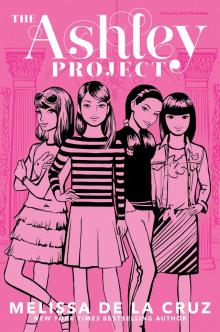 The Ashley Project
The Ashley Project Love & War--An Alex & Eliza Story
Love & War--An Alex & Eliza Story